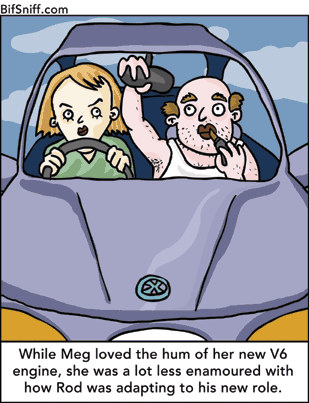Lesson 13: Gender Role Identity
Attention

Learning Outcomes
Upon completion of this lesson's material, students will be able to:
- Identify the presence of social roles associated with gender in thier own environment and upbringing
- Differentiate between gender roles and gender role stereotypes
- Describe various sources of Gender Typing present in early and life-long development
- Identify social institutions' role in the development and maintenance of Gender schemes
Teaching
Play and Gender Role Development
I am particularly interested in how "play" plays a role in the development of Gender Identity. (This is a combination of the two last sections in this chapter)
- We see a preference for same-sex peers at around ages 2-3 years old.
- Cultural images of male and female roles
- Interactions with caregivers
- Gender specific games and toys
Most BELIEFS that we have about the differences between males and females are false, and may be a result of socialization factors more than biological differences.
Although this artcle is a bit dated, click HERE to view research that was done on how preadolescents select toys to play with and the gender related behaviors that become associated with those toys. (This article is a large file, so be patient!)
Karpoe, K., & Olney, R.L. (1983). The effect of boys' or girls' toys on sex-typed play in preadolescents. Sex Roles, 9(4), 507-518.
Click HERE to download information on different kinds of children's play.
Gender and Language
Click HERE to download a very interesting article about the relationship between gender stereotype development and language interactions between moms and their children. (This article is a follow up analysis about the study that is discussed in your book "How Mothers Talk to Childrenn about Gender")
Leaper, C. B., R.S. (2004). Gendered language and sexist thought. Monographs of the Society for Research in Child Development, 69(1), 128-142.
Gender and Mathematics
Here are some great links researched by our students related to Math, Science, and Gender...
Click HERE to read an article relating to girl's math scores and the gender of the teacher. Girls Lead in Science Exam, but not in the United States...click HERE to read more! Girls Pulling ahead of Boys in School...in Canada...click HERE Debunking the Myths about Gender and Math Performance (sort of)...click HERE for more! |
Summary Thoughts in Gender Identity Development
In the previous two section, and in your book and the linked resources, I hope you can see a convergence of ideas that draw from the theories we have already been presented.
In Leaper (2004) we see the analysis of gender typing development as being "constructivist". Recall that Piaget was a "constructivist" so we can apply the concepts of Assimilation and Accommodation to the development of what a child will have as a "gender schema".
In the Karpoe (1983), although quite dated article, we see that the toys themselves are associated with specific qualities of gender rather than the activity of the child (regardless of the gender of the child).
We can also see Learning Theory playing a role here. Bandura expressed through his Social Learning Theory. Specific behaviors exhibited by caregivers and role models may be imitated but they have to be reinforced by the context in which the child is going to act. (Meaning...if stereotypical gender roles are had at home, but then the child goes to a daycare where everyone does dishes...he may encounter an environment that does not support the traditional gender schema that he learned at home and the behavior of exclusing himself from washing dishes and other "women's work" would not be supported)
Click HERE to review a short document on Gender Socialization
Click HERE to read an article relating to girl's math scores and the gender of the teacher.
Assessment
Lesson 13 Discussion
The book and lecture describes various sources of our gender identity (parental, peer, school, and, of course, biology). Pick one of these and tell a story from your own development, or the development of your children, that reflects on the creation of your (or their) gender identity. Explain how either parental, peer, or school impacted your gender identity development
Second, I'd like to see some of you ask your subjects about gender roles (I'm not expecting this from everyone but I think it will add an interesting dimension to our discussion). What do your subjects remember about "Men's Role" and "Women's Role"? How have they seen things change over time? What do they think about any changes they have seen?